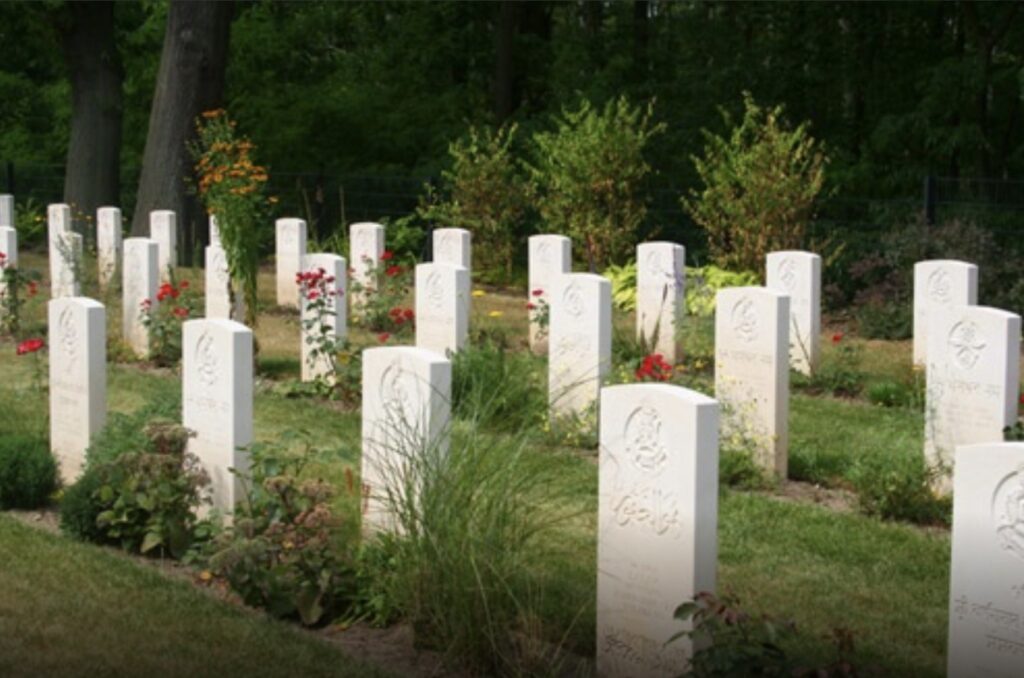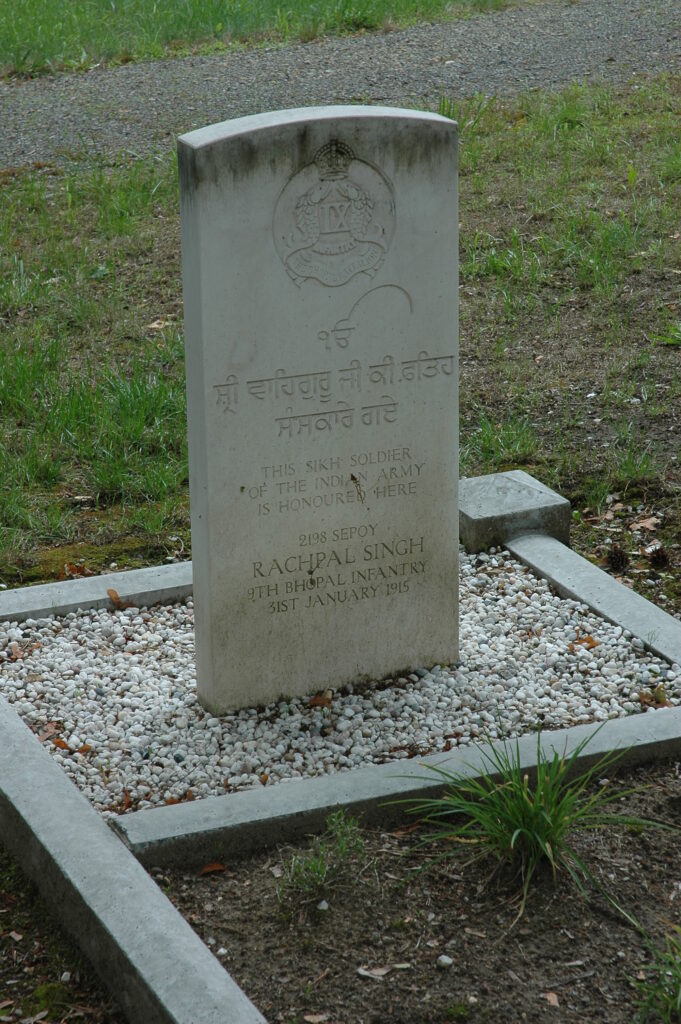
Amid a patch of woodland near Zossen in Brandenburg, hidden among pines and not far from a former military site, lies a place that at first glance seems surreal: the Zehrensdorf Indian Cemetery. Here rest 206 Indian soldiers, members of the British Indian Army, who were captured by German forces during the First World War and died far from home. Their final resting place in Germany prompts questions: what did Indian soldiers have to do with a European war? And how did they end up in a place like this?
The answer begins on the Western Front. Between 1914 and 1918, around 160,000 soldiers from what is now India fought in France and Belgium alongside British troops, particularly units of the Lahore and Meerut Divisions. Losses were heavy: disease, inadequate supplies and the relentless trench warfare claimed thousands of lives. Many were taken prisoner by German forces—Muslims, Hindus and Sikhs—who were then held in specially designated camps in Germany. One of the best-known was the “Halbmondlager” (Crescent Moon Camp) near Zossen. There, Muslim prisoners were to be accommodated not only in a military sense, but also with attention to religious and cultural needs. At the same time, the camp served German propaganda aims. With religious symbols and clerics, the authorities sought to persuade the prisoners to engage in anti-colonial activities and to turn against British rule. This attempt was largely unsuccessful.
Conditions in the camps were harsh. Although provisions met the standards of the Geneva Conventions, poor hygiene, inadequate medical care and the psychological strain led to many deaths. Tuberculosis, dysentery and influenza were common. Isolation, linguistic and cultural barriers, and uncertainty about the war’s outcome deepened the suffering. Religious needs were sometimes respected, but the circumstances remained oppressive.
Between 1915 and 1917, 206 of these prisoners died as a result of their captivity. Initially buried in the local military cemetery at Zehrensdorf, their graves were taken over after the war by the Commonwealth War Graves Commission (CWGC). The CWGC established a memorial cemetery with white sandstone, a central memorial stone, and symbols of various faiths. Some headstones bear Muslim inscriptions such as huwal gaffur (“He is the Forgiving”). Unlike many war cemeteries, this site does not glorify military valour. Instead, it is devoted to quiet remembrance and the universal human cost of war.
Yet this is not solely a place of remembrance. It also poses challenging questions. The Indian soldiers did not fight voluntarily but as part of a colonial army, in a war whose causes and aims were far removed from their own lives. That they were captured and died in a foreign land is a stark expression of a global power structure in which they had little agency. Germany’s role was equally shaped by ideology: in the Halbmondlager, Muslim prisoners were deliberately targeted in efforts to mobilise them against the British Empire—a dimension that is scarcely present in public awareness today.
The cemetery’s decades of neglect during the Cold War underline how little attention these colonial war dead long received—neither in Germany, nor in Britain, nor in India. The site lay within a Soviet military exclusion zone and was inaccessible to the CWGC. Only after the withdrawal of Soviet forces and German reunification could the cemetery be restored. It has been open to the public again since 2005, thanks to cooperation between local authorities, the state of Brandenburg, and the CWGC. In the meantime, since 1964, the names of the dead had been recorded at the Indian Memorial in Neuve-Chapelle, France, where they are listed as “died in German captivity”.
Today the cemetery lies silent, secluded, almost forgotten. And yet it tells of a global war whose front lines were not confined to Europe but extended deep into the colonies. The Zehrensdorf Indian Cemetery stands as a quiet witness to a colonial war history seldom made visible in Europe. It is a reminder that in Germany, too, lie the victims of a war that was not their own. Their names and stories endure—not through monuments to triumph, but through places of quiet remembrance.
But visibility alone is not sufficient. Without critical historical framing, this site too risks solidifying into a mere symbol. The cemetery points to the complexity of the First World War, to the blurred lines between perpetrators and victims in a colonial context. It invites a nuanced consideration of responsibility and guilt, beyond simplistic narratives. What is needed is a conscious, ongoing engagement with the colonial past within Europe’s landscape of memory.
Photo: (c) Foswiki
Additional links:

